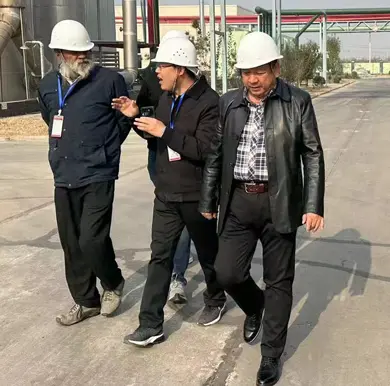
אוג . 09, 2024 01:20 Back to list
Applications and Benefits of Hydroxypropyl Methylcellulose in Various Industries and Products
Uses of Hydroxypropyl Methylcellulose A Versatile Polymer in Modern Applications
Hydroxypropyl methylcellulose (HPMC) is a non-ionic, water-soluble polymer derived from cellulose, which is primarily obtained from plant fibers. HPMC is widely recognized for its diverse applications across various industries, including pharmaceuticals, food, cosmetics, and construction. This article explores the multifaceted uses of HPMC and its significance in these sectors.
Uses of Hydroxypropyl Methylcellulose A Versatile Polymer in Modern Applications
In the realm of food science, HPMC is valued for its thickening and emulsifying properties. It is commonly used as a food additive, labeled as E464, to improve texture and consistency in products such as sauces, salad dressings, and ice creams. HPMC can also retain moisture, which helps extend the shelf life of baked goods and processed foods. Its ability to create a gel-like structure makes it an ideal ingredient for gluten-free products, providing a desirable mouthfeel and texture without the use of traditional gluten sources.
uses of hydroxypropyl methylcellulose

HPMC's role in cosmetics and personal care products cannot be overlooked. It is widely used in lotions, creams, shampoos, and gels due to its excellent thickening properties and ability to enhance the spreadability of formulations. HPMC acts as a film former, providing a smooth texture and helping products adhere to the skin or hair. Moreover, it aids in stabilizing emulsions, ensuring that oil and water components remain mixed effectively. This makes HPMC an essential ingredient in many beauty products aimed at improving user experience and product efficacy.
In the construction industry, HPMC is increasingly recognized for its performance-enhancing properties in cement and mortar applications. As a water-retention agent, it prevents rapid water evaporation during the drying process, allowing for better hydration of cement and higher bond strength in mortars. HPMC also improves the workability of construction materials, enabling easier application and spreading. Its versatility allows it to be used in various construction products, including tile adhesives, plasters, and joint fillers.
Moreover, HPMC is being explored in the growing field of 3D printing. Its unique properties can help improve the printability of various materials, contributing to better layer adhesion and uniformity in printed objects. As industries continue to innovate, the potential applications of HPMC are expanding, paving the way for new technologies and products.
In conclusion, hydroxypropyl methylcellulose is a versatile polymer with a wide range of applications across various sectors. Its ability to act as a binder, thickener, stabilizer, and film former makes it an invaluable ingredient in pharmaceuticals, food products, cosmetics, and construction materials. As research and technology advance, the future may unveil even more innovative uses for HPMC, further solidifying its role as a crucial component in many everyday products. Its diverse functionality and adaptability ensure that HPMC will continue to play a significant role in enhancing product quality and performance across multiple industries.
-
Unlocking the Benefits of HPMC Products: A Gateway to Versatile Applications
NewsAug.07,2025
-
Unleashing the Potential of HPMC Ashland: A Comprehensive Look
NewsAug.07,2025
-
Tile Bonding Cellulose: The Key to Superior Adhesion and Durability
NewsAug.07,2025
-
Hydroxypropyl Methylcellulose Powder: The Versatile Component in Modern Pharmaceuticals
NewsAug.07,2025
-
Hydroxyethyl Cellulose: The Versatile Solution for Various Industries
NewsAug.07,2025
-
Hydroxyethyl Cellulose (HEC): The Versatile Polymer for Various Applications
NewsAug.07,2025







